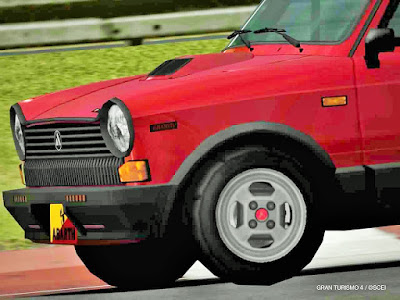The GT4 1994 Subaru IMPREZA Sedan WRX STi is today's car.
The color is Black Mica.
This Subaru IMPREZA is the first Subary IMPREZA.
The track is Costa di Amati, a rally track.
The car is the money-maker. I use it to grind credits in GT4 by racing it at Costa di Amati Easy, winning some Toyota rally car and selling it for over Cr. 250,000.
GT (5) file says:
"Its history started here. The first Impreza WRX crowned with the STi name."
When Subaru introduced the Impreza WRX in November 1992, it was
immediately obvious that the car was destined to participate in the
World Rally Championship. The compact body housed the EJ20 engine, a
turbocharged flat-4 that produced 237 HP at 6000 rpm and 224.2 ft-lb of
torque at 5000 rpm. It didn't take long for Subaru's motorsports and
tuning arm, STi (Subaru Technica international), to get involved with
the car, and in January 1993, it created the WRX STi. It represented the
ultimate Impreza, highlighted by special racing parts such as forged
piston and strut tower bars. But more importantly, output was increased
to 247 HP and 227.8 ft-lb. Nine months later, after some minor
modifications, the trusty boxer engine produced even more power, rated
at 256 HP at 6500 rpm. STi followed this with a completely new model
called the WRX Type RA STi, a motorsports-based car pumping out a
whopping 271 HP at 6500 rpm and 235.0 ft-lb of torque at 4000 rpm.
In August 1995, STi introduced the WRX STi Version II, which was
essentially the same car as the first version, only the WRX Type RA
represented the base model (not the WRX) and a wagon variant was added
to the mix. STi also released special edition models honoring its WRC
#555 race rally car (500 sedans and 100 wagons) that brought Subaru its
first WRC series title.

There were three models in the first Subaru Impreza (non-STi) range: a two-door coupe, a four-door saloon (aka sedan, the featured car in this blog entry) and a five-door estate. Trims were LX, GL and sport.
The interior was decidedly basic: dull grey plastic and uninspiring seat upholstery but its uncompromising performance was the redeeming factor.
The car has become a cult classic for the reason of being reliable, tough and fast.
However, an old Impreza isn't cheap to run.




















































